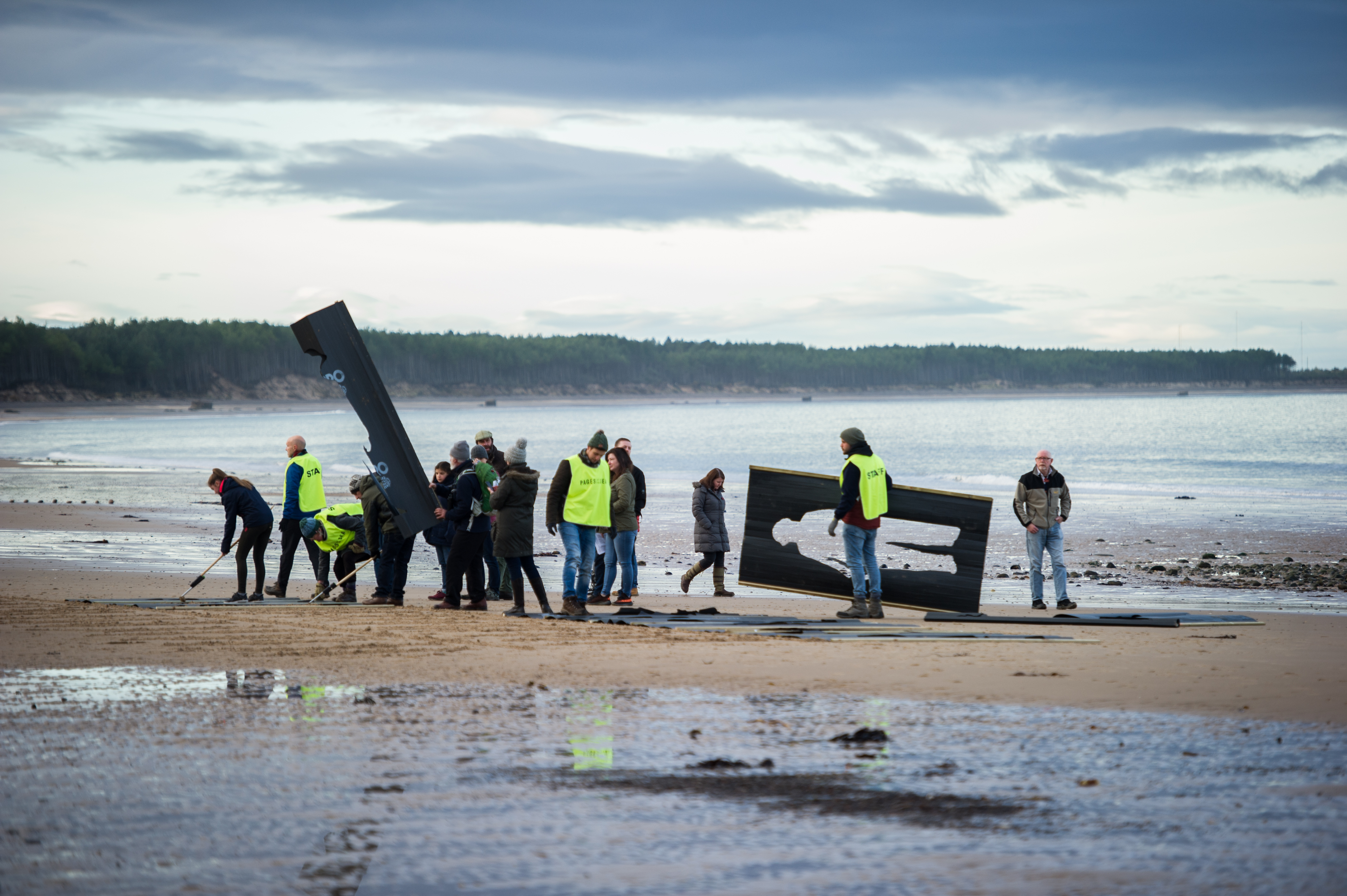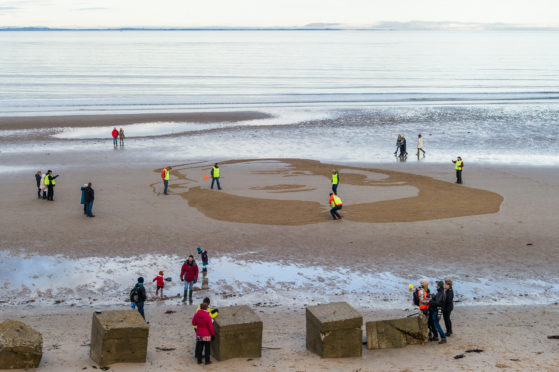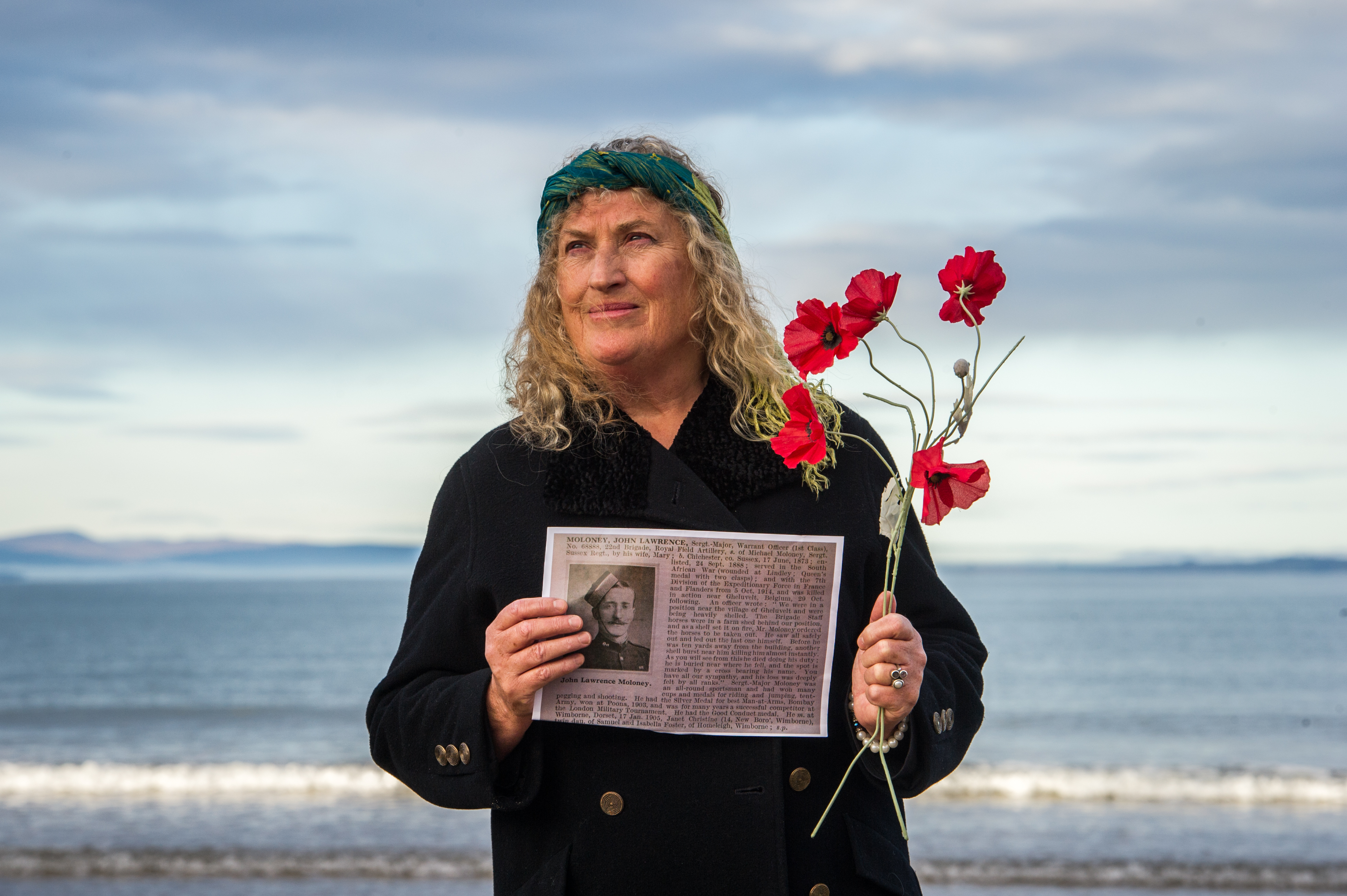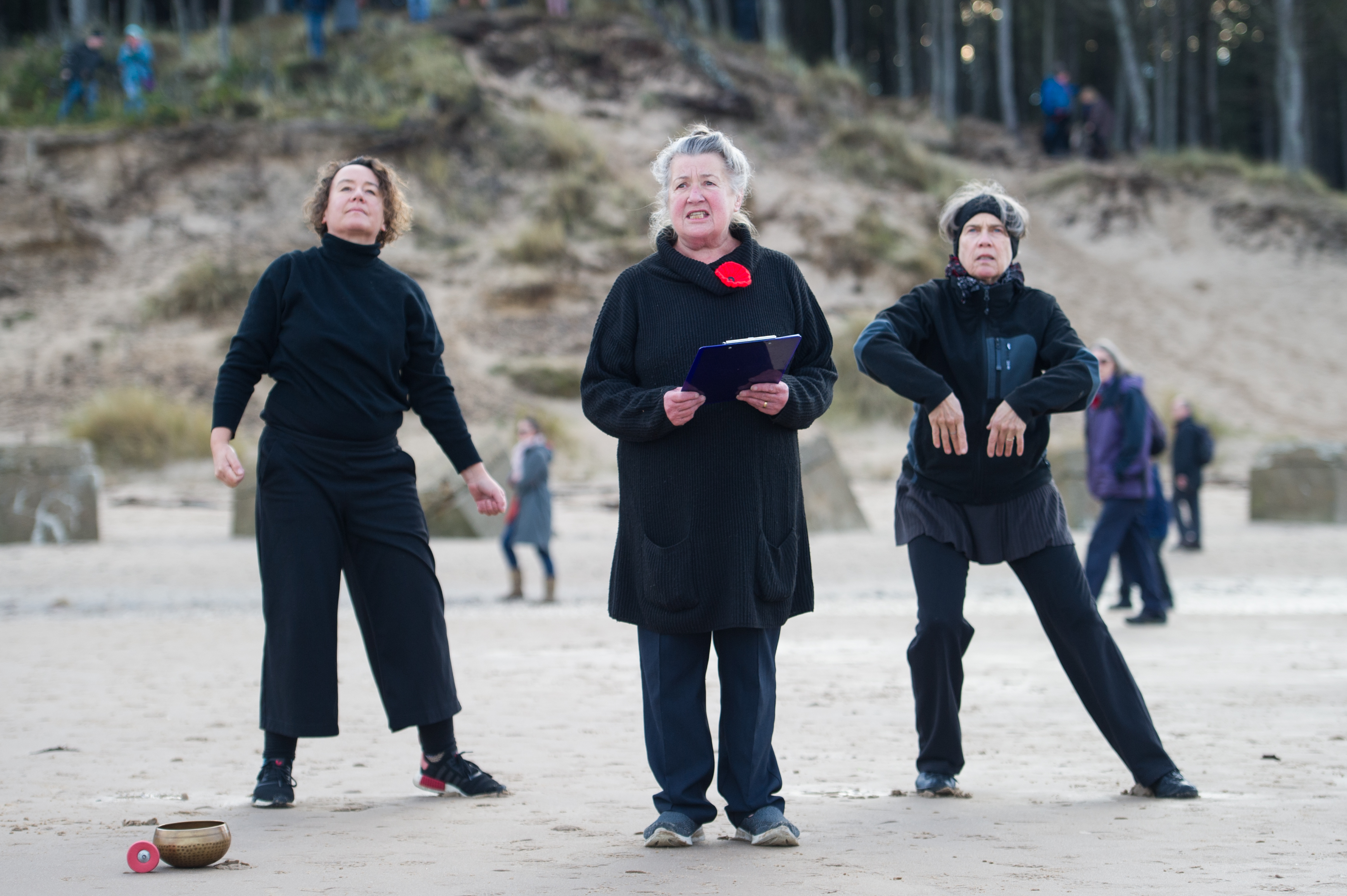Beaches across the north became canvases yesterday in a special commemoration for Scottish heroes who died in the First World War.
Crowds gathered on Roseilse beach in Moray, Scapa beach in Orkney, St Ninian’s beach in Shetland and Culla Bay on Benbecula to pay their respects to the men and women who left their home shores to join the battle.
Large-scale sand portraits local heroes were created and designed by sand artists.
They were drawn into the sand on the beach and then washed away as the tide comes in.
At Roseisle, Aberdeen-born Captain Charles Hamilton Sorley – who penned the poem Such, Such as Death and is said to have inspired the likes of Wilfred Owen – was commemorated.
Born in 1895, he went on to be educated at King’s College School in Cambridge then Marlborough College.
Sorley signed up for military service, taking on the role of second lieutenant with the Suffolk Regiment. He was promoted to captain three months after arriving on the Western Front. Sorley was sadly killed after being shot in the head by a sniper during the Battle of Loos on October 13, 1915 at the age of 20.
In Orkney, Lieutenant Robert Taylor – a banker who enlisted in Kirkwall – was honoured, while at Culla Bay, the artist chose to honour Duncan MacKinnon – one of six brothers who all went to war. He and his brother Neil both died.

The team created silhouettes rather than a large-scale portrait at St Ninian’s Beach, similar to those created by members of the public at the other beaches.
A unique undertaking, the events formed part of Danny Boyle’s Armistice commission Pages of the Sea, where people were invited to assemble at one of 32 beaches across the UK and Republic of Ireland to remember those lost in the war.
The National Theatre of Scotland led these events and Simon Sharkey the artistic lead for the project was pleased at the public response.
He said: “From the moment the sun rose there has been people on the beaches standing with the silhouettes and portraits of the fallen as a personal tribute.
“As the waves came to claim the portraits, it was very moving to see.”
James Chitty was the man tasked with creating the sand portrait of Capt Sorley, and he was thrilled to see such a big turn-out there.
He said: “It’s gone really well, we couldn’t have wished for a better turn-out, we have had hundreds of folk on the beach it is truly great and its a wonderful opportunity for people to have their own reflections on what it means to them.
“We were up early this morning in the dark laying it out and then we raked it all in and now that is the sea starting to wash it away.”
The road to Roseisle beach was completely deadlocked, as people travelled from far and wide to pay their respects and see the sand portrait up close.
A poem by Carol Ann Duffy was also commissioned called The Wound in Time and was handed out to everyone who came to the beaches.


